How to serve ads in an email newsletter
This guide will show you how to serve email ads through AdButler.
You can create only image ad items in email ad zones, because almost all email clients block all other types of ads. You can however capture static image files of your native ads and use those images in image ad items.
You will learn how to:
- Create an email ad zone.
- Add an email ad item.
- Configure an email zone tag.
- Set an email zone tag in an email template.
iOS 15 for Apple mobile devices includes a feature called Mail Privacy Protection. Its implementation changes how the Apple Mail client handles certain links, including AdButler's zone tags. We updated our email zone tags in response to Apple's new feature. If you generated your email zone tag before Oct 8, 2021, you must replace it with the updated version to ensure that you can still serve ads to viewers using iOS 15 and above. See step 3 and step 4 of this guide for instructions on creating and setting email zone tags.
A recent update for Microsoft Outlook may cause images of ads served through AdButler to be blocked. If you generated your email zone tag before Jul 21, 2021, we recommend you replace it with the updated version to ensure that you can still serve ads properly to viewers using Microsoft Outlook. See step 3 and step 4 of this guide for instructions on creating and setting email zone tags.
Step 1: Create an email zone
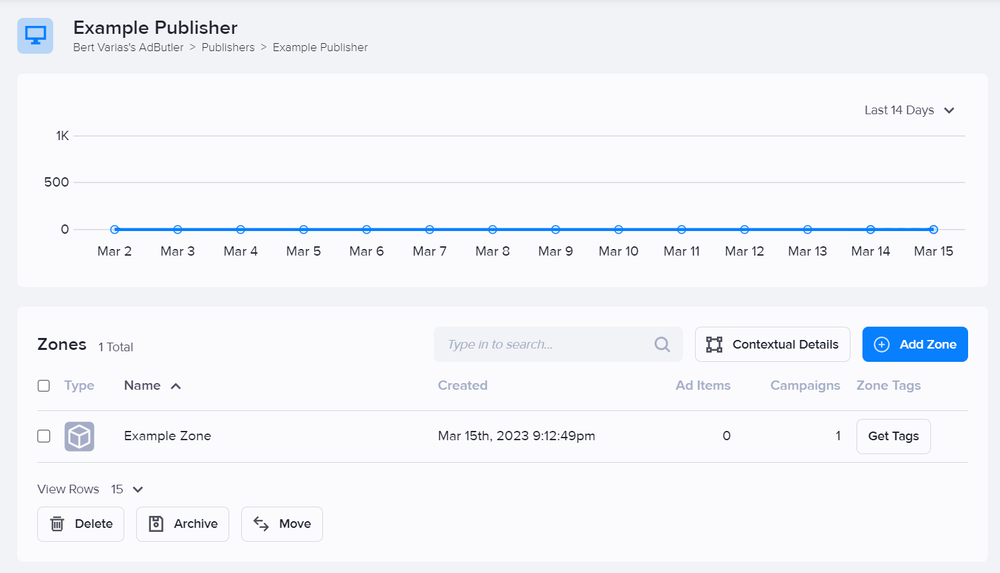
- Go to the section of the relevant publisher ( Your AdButler > Publishers > Your Publisher ).
- Click on Add Zone under the Zones table. The Zone Type window will appear.
- Click on Email.
- Give the ad zone a name. It helps to name zones clearly and consistently to make them easy to identify throughout the AdButler interface. To follow this guide, name the zone Example Email Ad Zone.
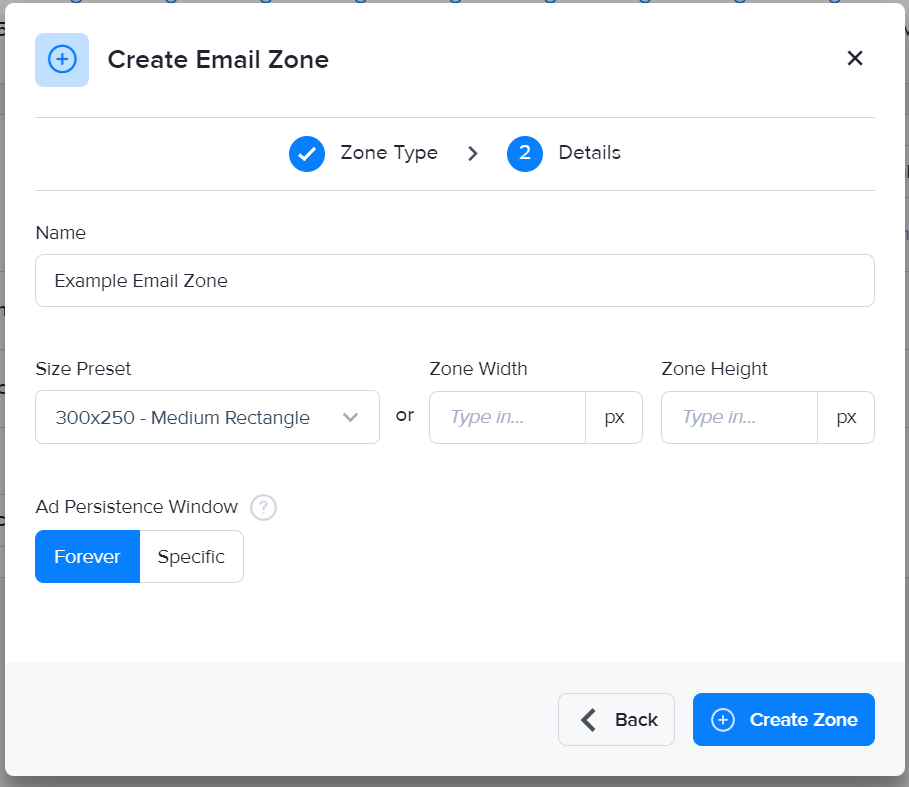
- Select one of the preset dimensions or enter the size of the email ad items to be served in the zone.
- You can enable ad rotation by clicking Specific under Ad Persistence Window, then entering a period in minutes or days. When enabled, AdButler will serve a different ad based on your chosen period.
Enabling ad rotation may cause errors in redirecting clicks. Readers may be taken to a previous or new link when clicking an ad item. If ad rotation is not vital to your setup, leave it disabled to ensure that clicks are redirected properly and your click statistics remain accurate.
- Click Create Zone to save the new email ad zone. It will appear in the table of zones in the publisher's section.
Step 2: Create an email ad item
- Go to the section of the relevant email ad zone (Your AdButler > Publishers > Your Publisher > Your Email Ad Zone). If you started with Step 1, use the zone you just created.
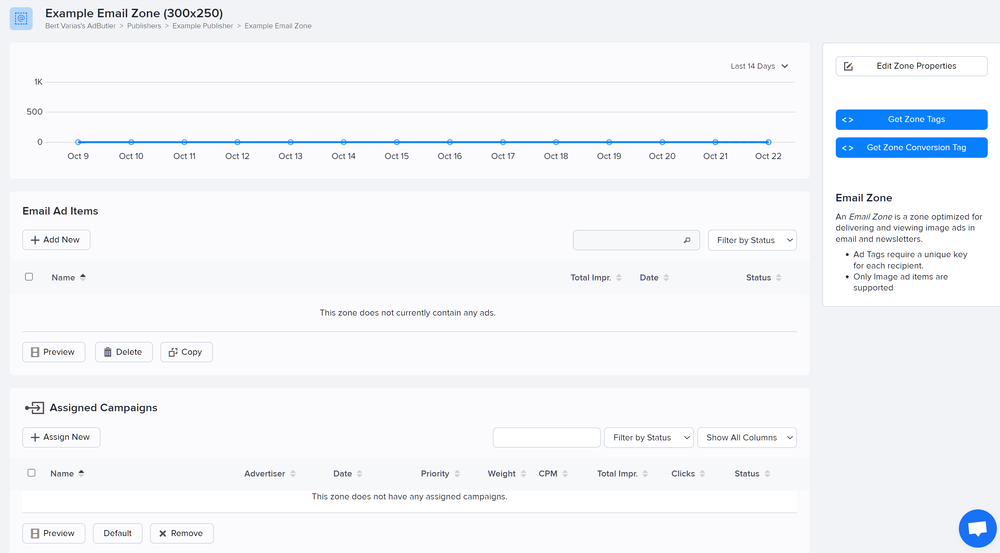
- Click on Add New above the Email Ad Items table. The New Ad Item settings will appear.
You can create only image ad items in email ad zones, because almost all email clients block all other types of ads. You can however capture static image files of your native ads and use those images in image ad items.
- Select a serve method. For more information, read Serve Method Options. The rest of the settings will appear.
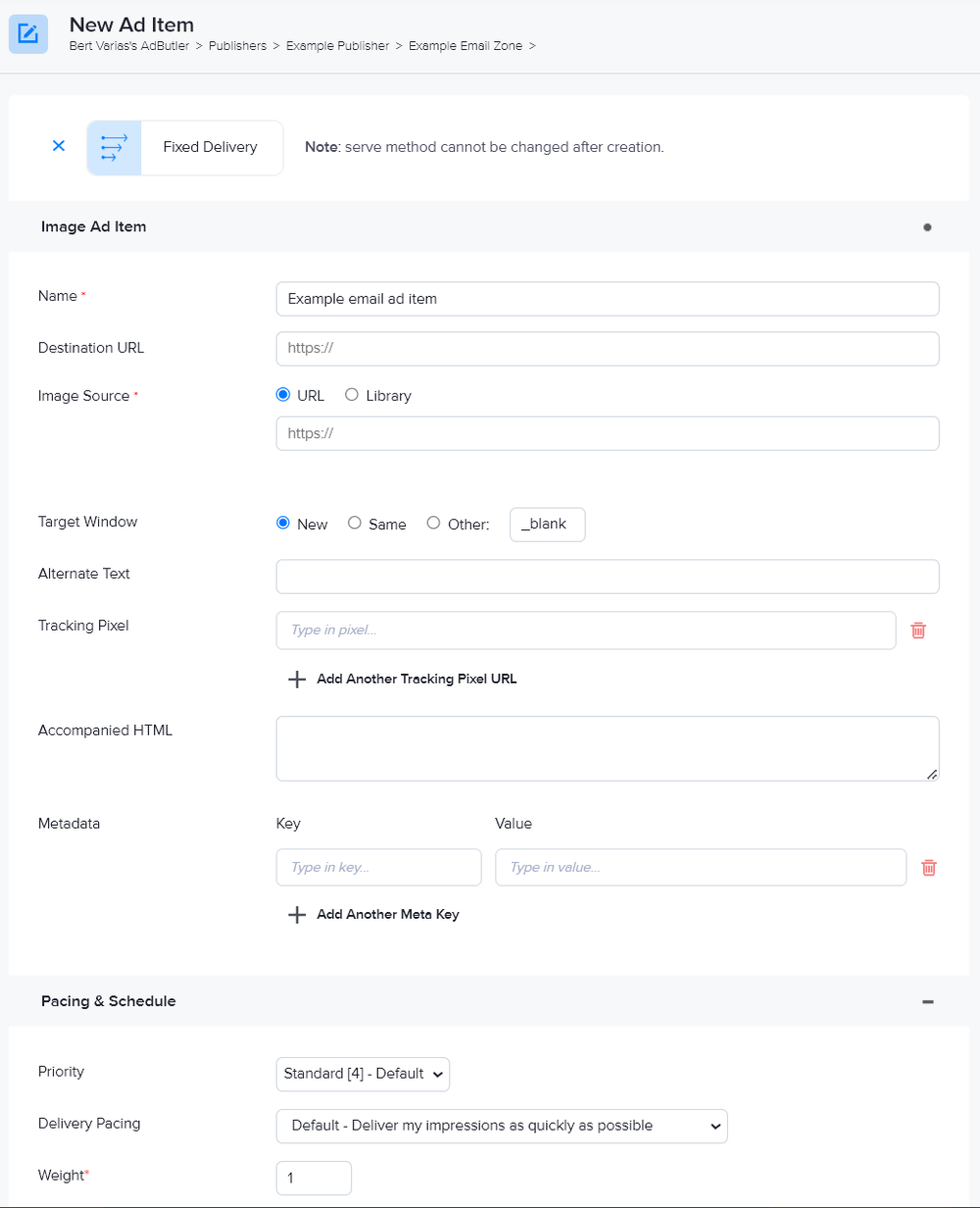
You can have multiple tracking pixels per email ad item.
- Give the ad item a name. To follow this guide, use Example Email Ad Item. Fill in the rest of the fields as needed. For more information on image ad item settings, read Creating an image ad item.
- Click Save. The new image ad item will appear in the table of ad items in the email ad zone section.
You can also create an advertiser campaign and assign them to your email ad zone. As with individual ad items, campaigns for emails must include only image ad items. For more information, read About campaigns.
Step 3: Configure the email zone tag
Go to the section of the relevant email ad zone ( Your AdButler > Publishers > Your Publisher > Your email zone ). If you started with Step 1, use the zone you just created.
Click Get Zone Tags in the right menu of the email ad zone section. The Zone Tags window will appear.
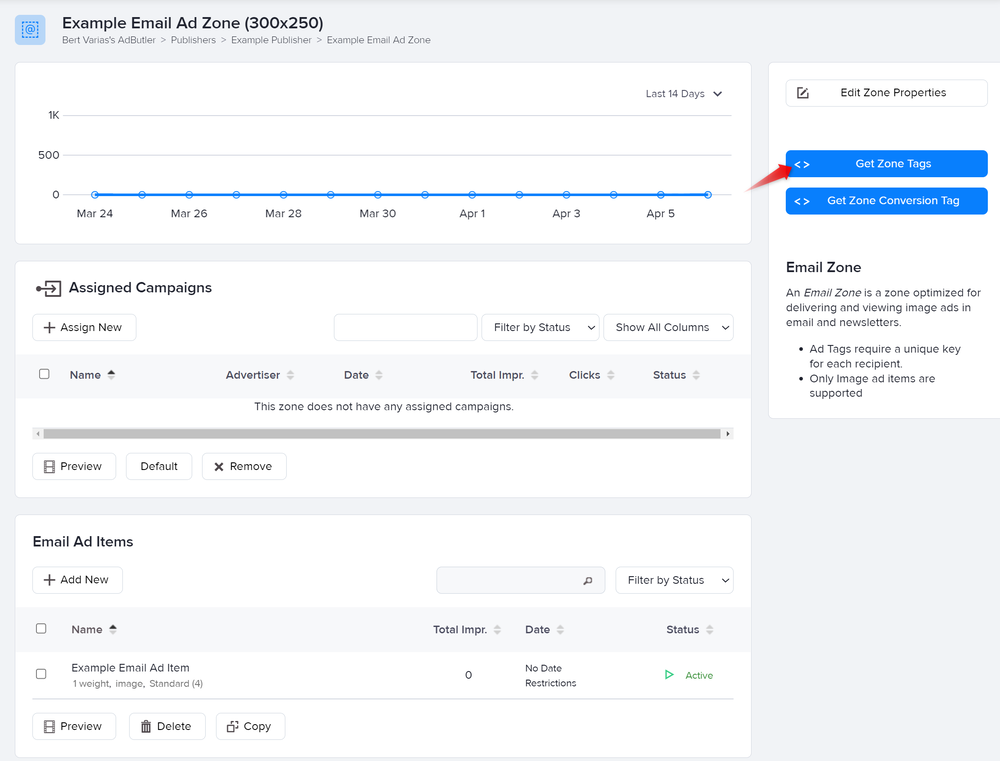
For ad items to rotate and track clicks properly, email ad zone tags require an Email User ID macro (EUID). Email providers have different implementations of the EUID. See Common Newsletter Email Unique IDs for a list of EUIDs from major email providers. If your email provider's EUID isn't on the list, contact our support team at hello@adbutler.com for assistance.
- Enter your email provider's EUID in the Email User ID Macro field.
- Enter a click macro (optional).
- Select the protocol.
- Click Generate Tag.
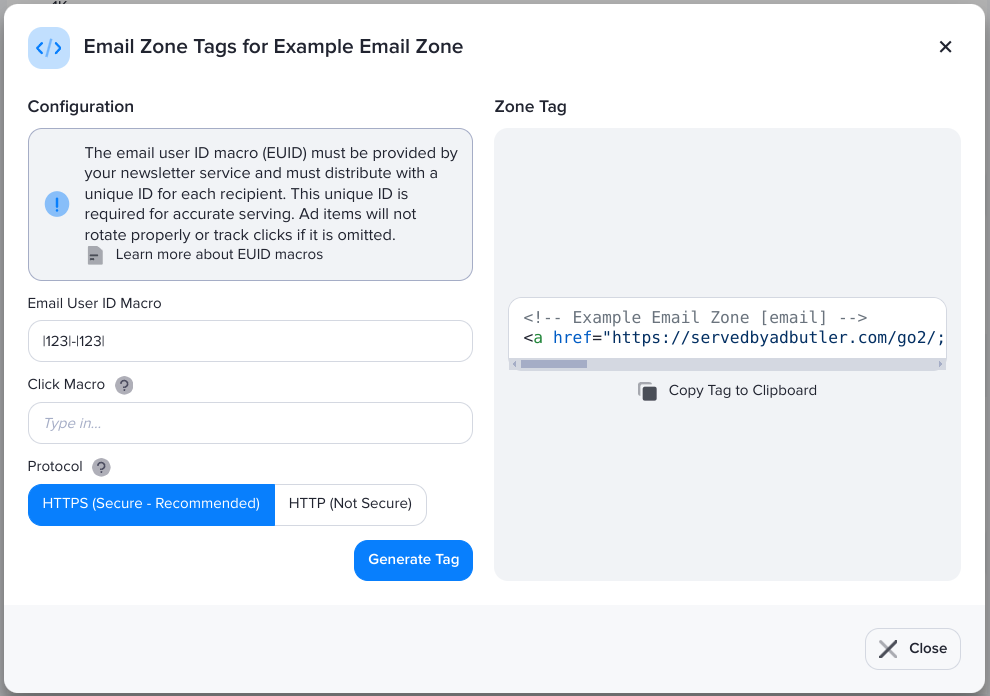
- Copy the zone tag and add it to the body of your email template.
Step 4: Set the email zone tag
- Create a custom email template where you will add your zone tag. Look for the field in the template where you can place a snippet of code, such as the zone tag.
- In the HTML field, paste your zone tag code inside the section or wherever you want your ad to appear inside the newsletter. Be sure to save your template.
When you send out your email newsletter using this template to your subscribers, any ads assigned to that zone tag will appear within the email.
Example: Setting the zone tag in a Mailchimp email template
- Configure and copy your email ad zone tag as shown in step 3. Mailchimp's EUID is
*|CAMPAIGN_UID|*-*|UNIQID|*. - Log in to your Mailchimp account, then click Create in the left navigation menu.
- Click Email then select either Regular or Plain text.
- Name the email then click Begin.
- Click Design Email in the email template creator. You will be asked to select a template.
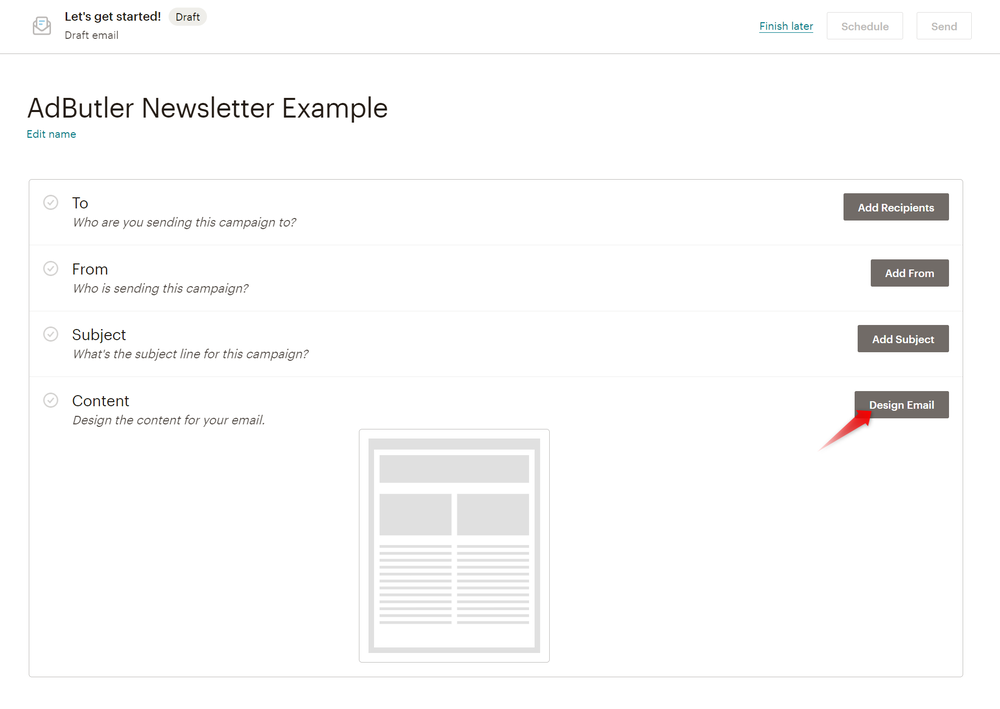
- Click on the Code your own tab.
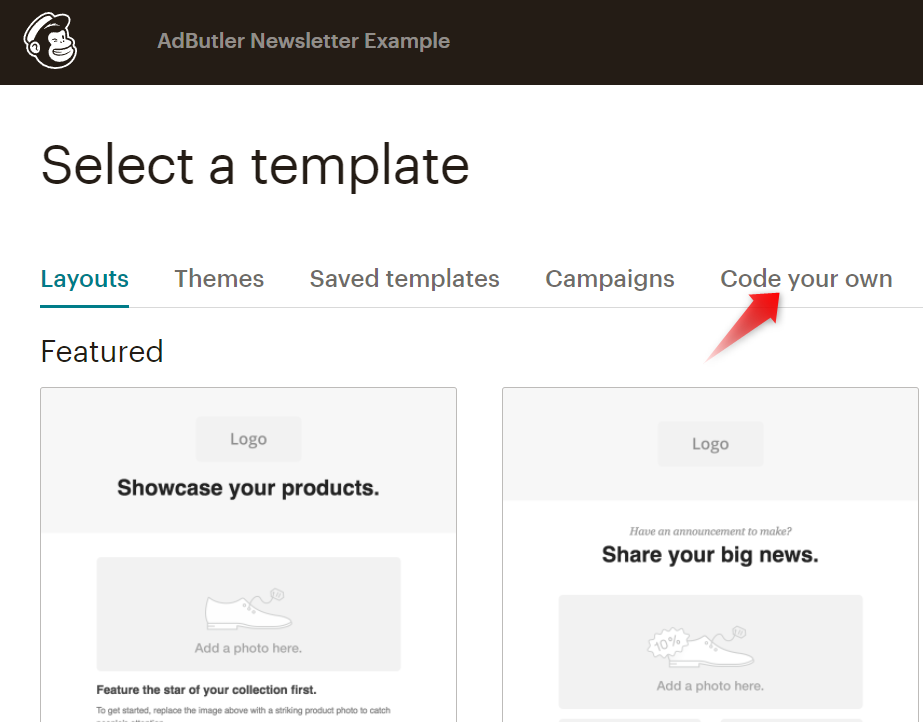
- Click on Paste in code.
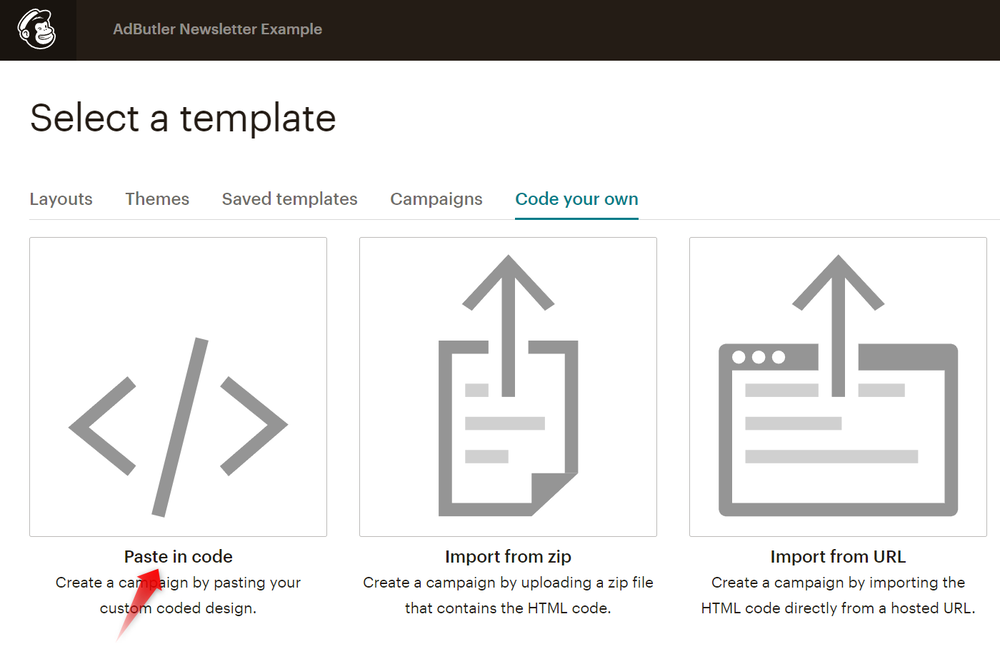
- Create your template in the text field, then add the zone tag into the template's body.
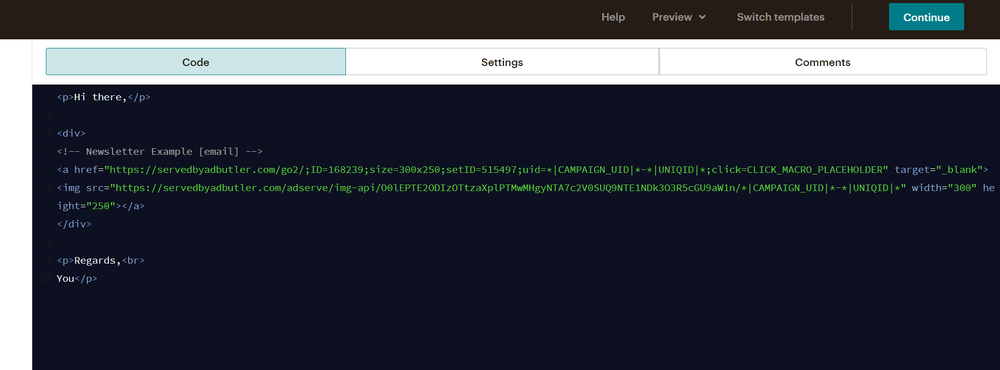
Email ad impressions are recorded when an ad loads. However, no additional impressions are tracked once the image is cached (which is commonly how an email application displays ads). On the other hand, clicks are recorded each time someone clicks the ad, whether or not the ad image is cached.